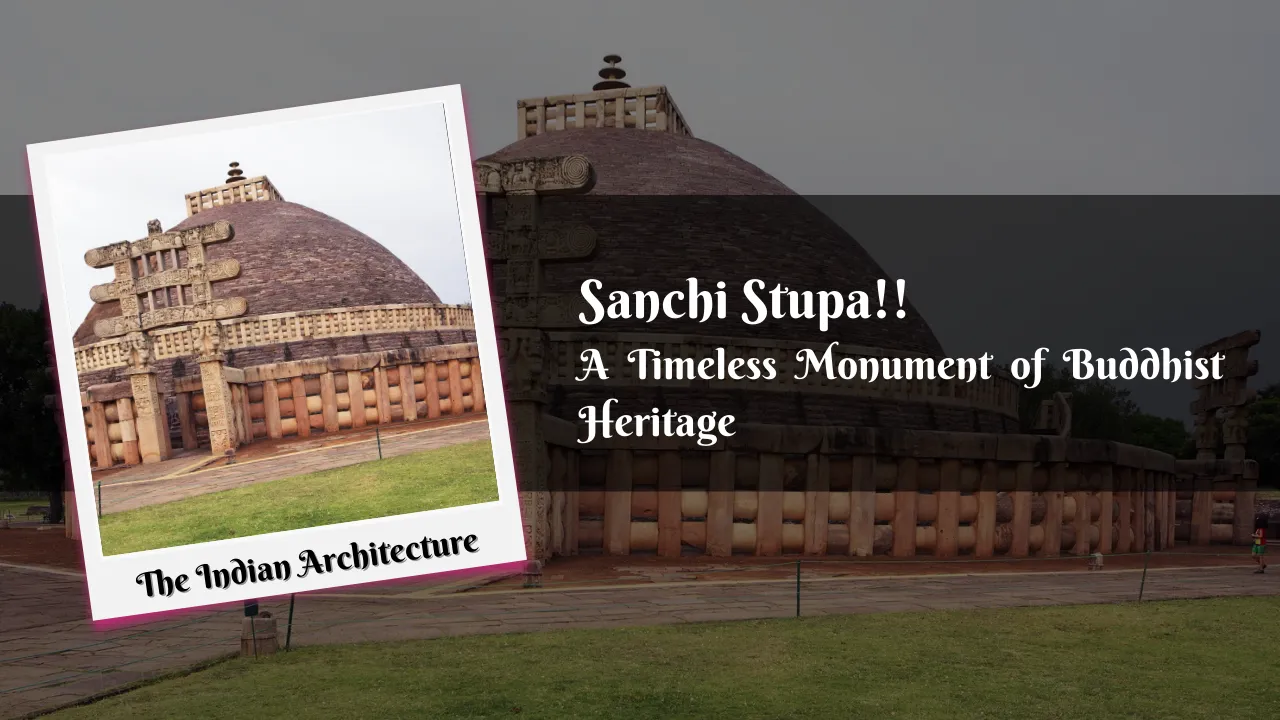Sanchi Stupa: A Timeless Monument of Buddhist Heritage

Sanchi Stupa is located in Madhya Pradesh. It is a testimony to the incredible Indian Architectural achievements. A Stupa is a dome-like building which is specifically built as a Buddhist shrine. Sanchi Stupa represents the wheel of Dharma (Guiding Principles). It is a symbol for spiritual as well as cultural abundance in India. There are actually three Stupas in the town of Sanchi, and thus they are known as “Sanchi Stupa”. This is one of the oldest Buddhist monuments in the country.
3 Stupas of Sanchi
The two stupas hold the relics of some arhats and Sariputta and Mahamouglayan, while there is one Stupa which is also called the great Stupa, oldest amongst the three holds the relics of Buddha himself. The main focus of building this Stupa was to spread the Buddhist philosophy and conserve it over time.
The Great Stupa, also known as stupa no. 1, was built in the 3rd century BCE by the Great Mauryan emperor Ashoka, where ashes of Buddha were placed. While initially this was a simple structure, after the damage caused to it in the 2nd century BCE, it was repaired and also enlarged, more elements were added, the final form that we see now in the Sanchi was finished by the 1st century BCE.
The construction began as a result of redistribution of the mortal relics of the Buddha to build Stupas in different locations which would help in spreading the teachings of Buddhism. The present dome edifice is double the size of what Ashoka built. The construction process was supervised by Queen Devi, wife of Ashoka who was born in Sanchi itself.
The other Stupas, Sanchi’s Stupa-2 and Stupa-3 were constructed during Magadh’s Shunga dynasty.
While the initial construction was led by Ashoka, the entire premise we see now has developed over different time periods. The gateways were built in the 1st century BC, at the time the Satavahana ruled.
Architectural features of Sanchi Stupa
The Great Stupa is the main attraction of this site, which is known as Anda. This special dome is adorned with three chhatris (umbrella structure). These 3 chhatris represent the core principles of Buddhism, in essence, Dharma, Sangha(community) and Buddha.
The Stupa has 120 feet of diameter, while it stands with a height of 54 feet, this great size makes it a unique heritage of the country. There are 4 Torans (gateways), beautifully carved with life events of Buddha. Each Toran has 3 horizontal bars with different themes on both the sides, front and back, there are also two vertical pillars on the top of the Torans.
The famous Lion capital pillar of Ashoka is on the southern side of the Stupa, which proves the place in time became the centre of art evolution.
The great Stupa is circumference by two pradakshina paths, lower and upper while the other two Stupas have only lower Pradakshina only (A Pradakshina typically means going around). This concept of Pradakshina happens to be a very Indian concept followed by many religions that developed in the country. Intricate carvings are also a fascinating feature in Sanchi Stupa, which depicts various historical events.
Significance of Sanchi Stupa
Sanchi Stupa is one among the UNESCO world heritage Sites in 1989. The national emblem of the country is also adopted by the lion capital from Sarnath and Sanchi. This place holds a great place for the attraction of tourism in the country as well as holding Buddhist community and teachings’ foundations.
Also Read:
